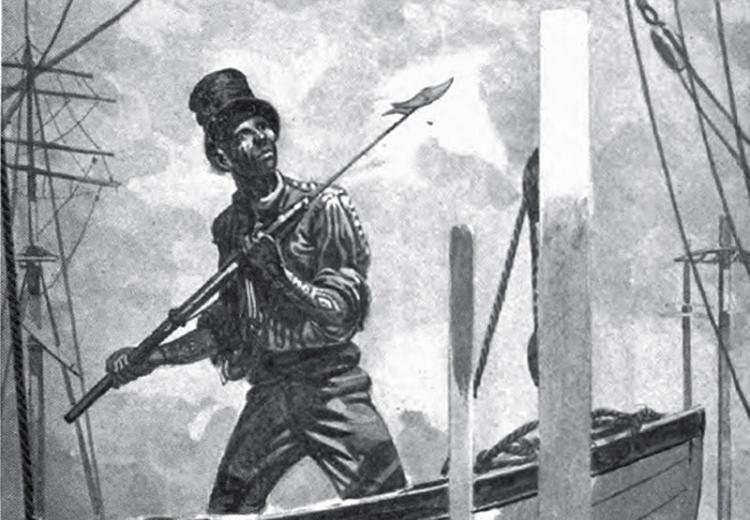Lesson 3: Literary Genres in “Moby-Dick”

Illustration of Queequeg and his harpoon.
Moby-Dick stands as a remarkably complex novel, one that takes its reader on many excursions over the course of its plot. As much as readers set sail for the South Pacific on the Pequod, they also travel through many literary genres interspersed throughout the text. With Moby-Dick, Melville makes manifest his belief that “It is better to fail in originality than succeed in imitation.” Melville does not settle for an imitative work that strictly adheres to the expected traditional forms of the genre of the novel. He pushes these boundaries by using other forms of writing to incorporate multiple voices in his text while still retaining the dependability of his narrator.
Students investigate chapters from Moby-Dick that rely most heavily on other types of writing. Teachers will be leading the class through an investigation of the hymn genre, modeling the process that students will later use in small groups to analyze other genres—science writing, drama, or a sermon. They use their analysis to build a stylistic profile for their genre and present their findings to the class. The concluding whole class discussion will expose connections between the different genres of writing.
This lesson is one part of a three-lesson unit on Moby-Dick. The three lessons may be taught in sequence, or this lesson can stand on its own. Teachers may link to the full unit with Guiding Questions, College and Career Readiness standards and Background. Lesson 3 aligns with CCSS.ELA-Literacy.RL.11-12.5.
Learning Objectives
Describe the main characteristics of several different genres of writing—sermon, science writing, hymn, and drama—that Melville integrated within Moby-Dick
Compare the different genres in Moby-Dick to determine their impact on the story
